site search
online catalog
INDIAN USED AND TACK DECORATED SHARPS NEW MODEL 1859 NAVY CARBINE

Hover to zoom

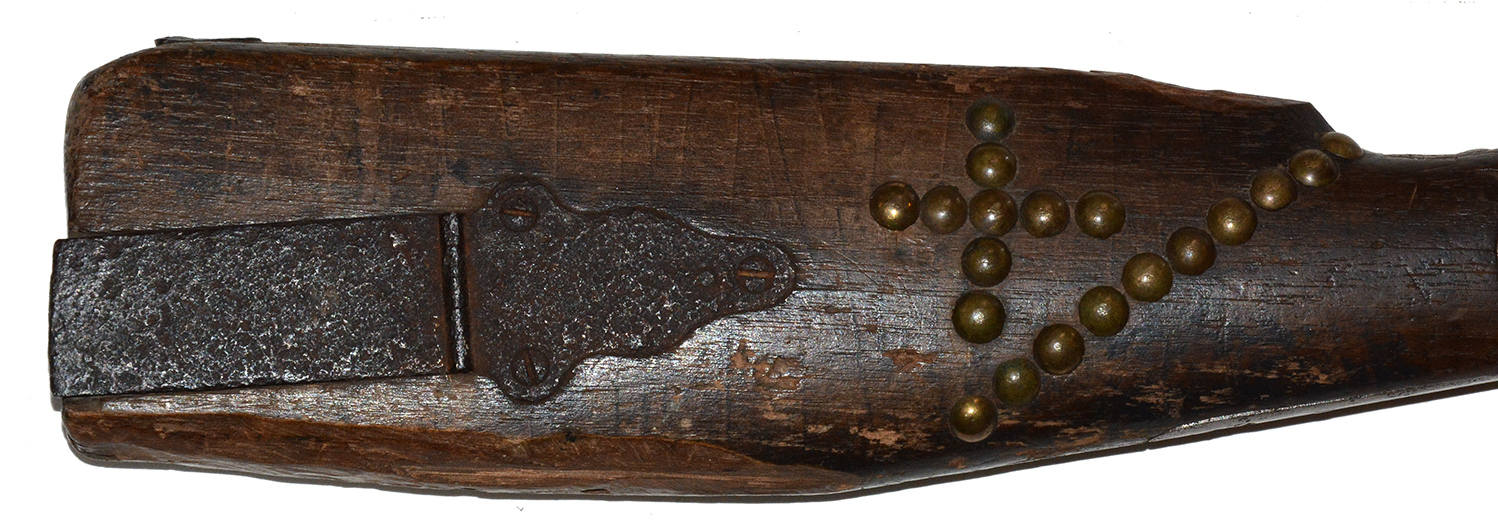
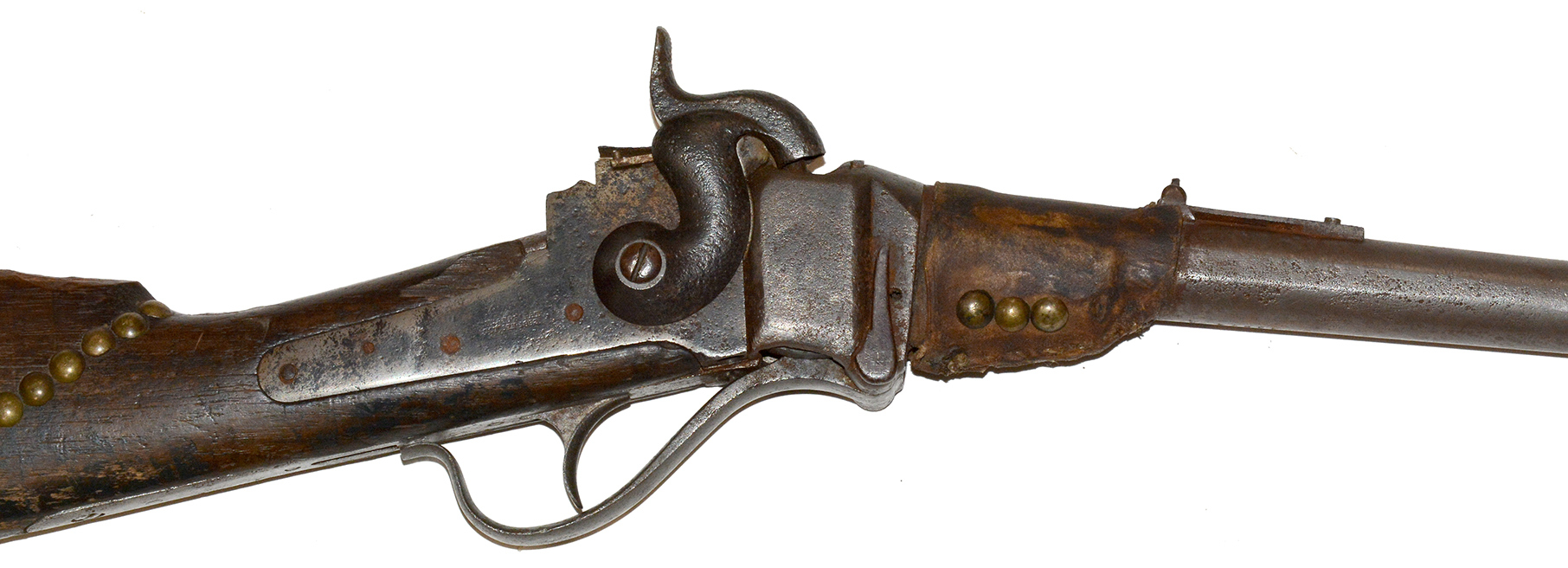
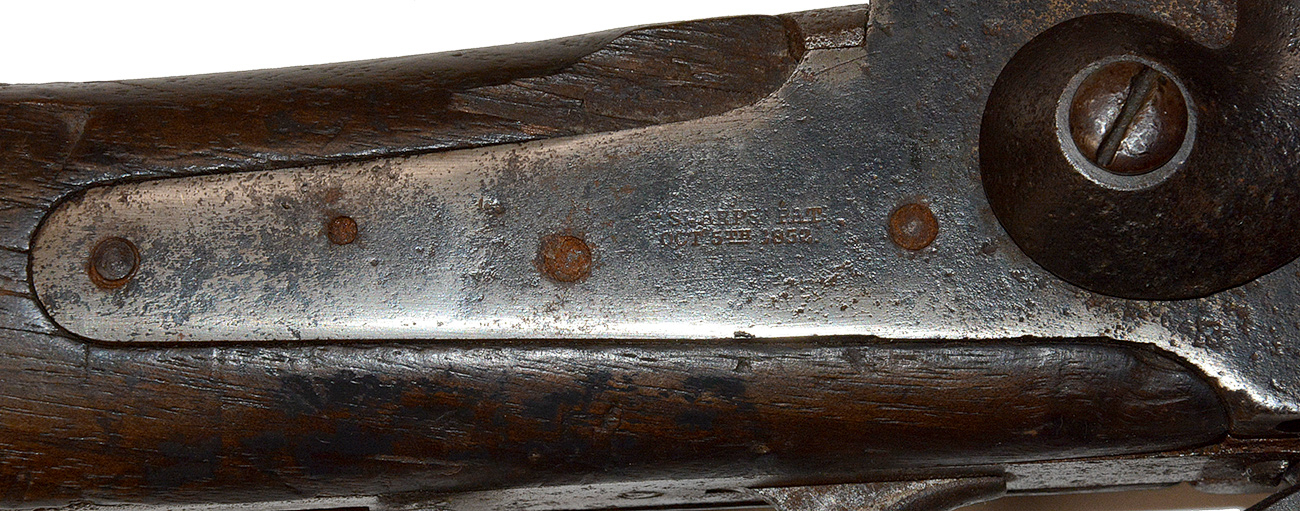
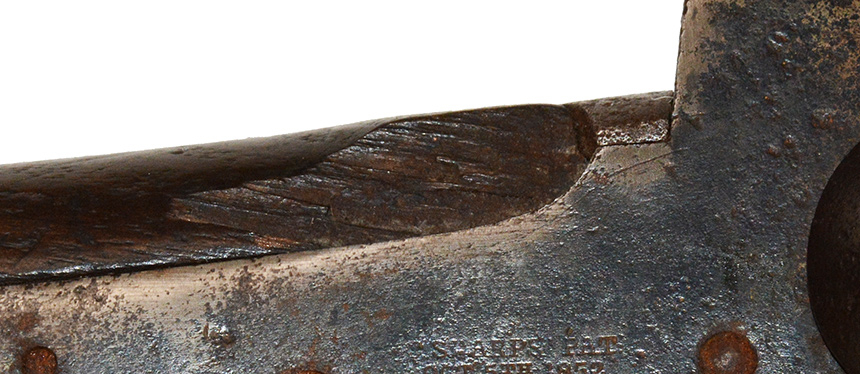
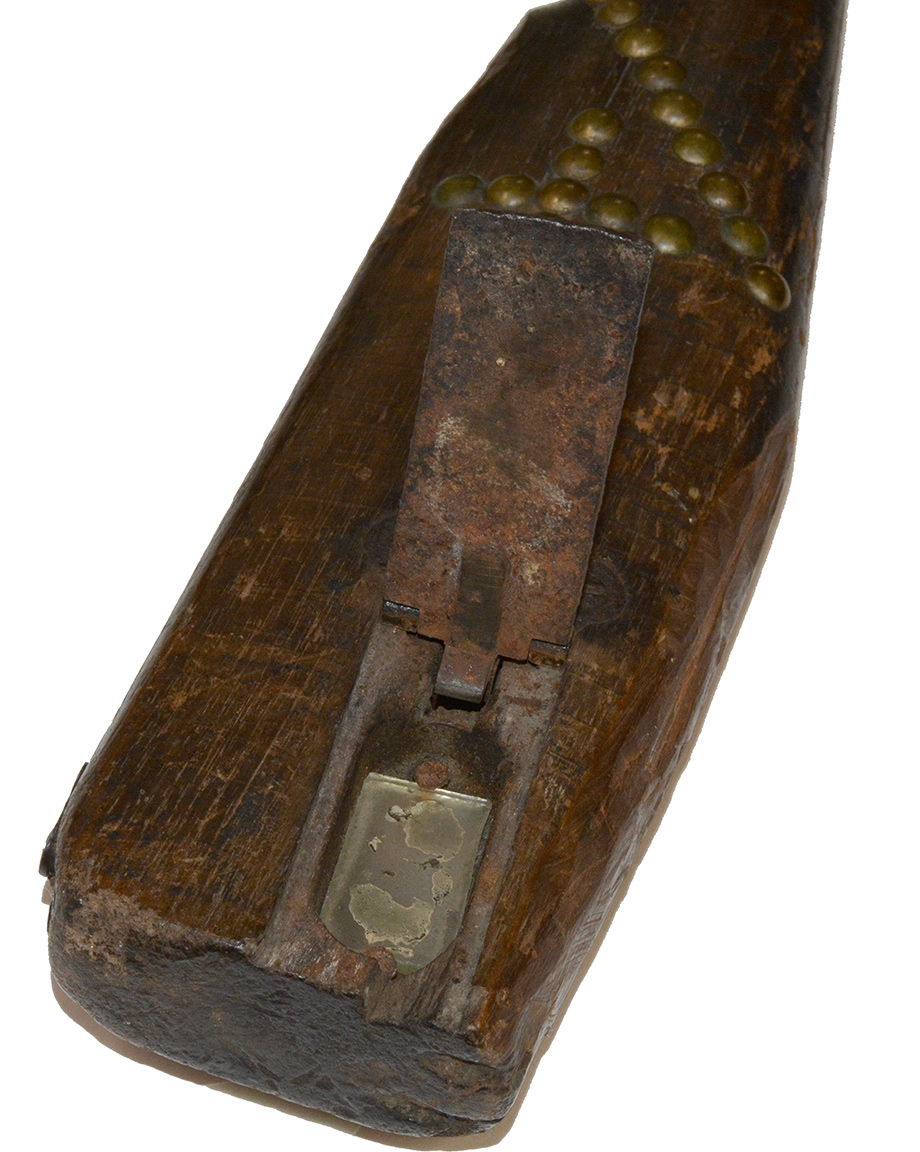
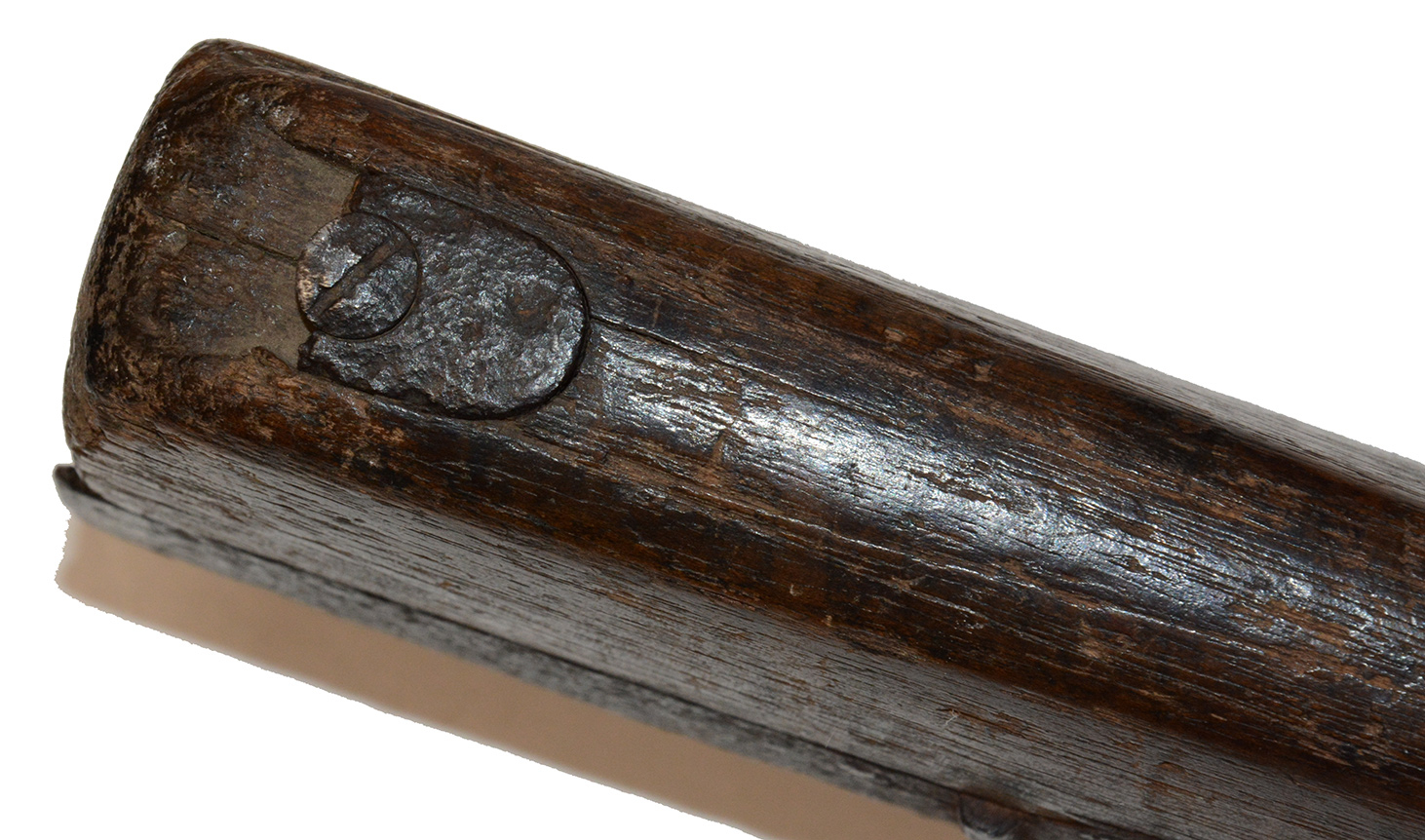
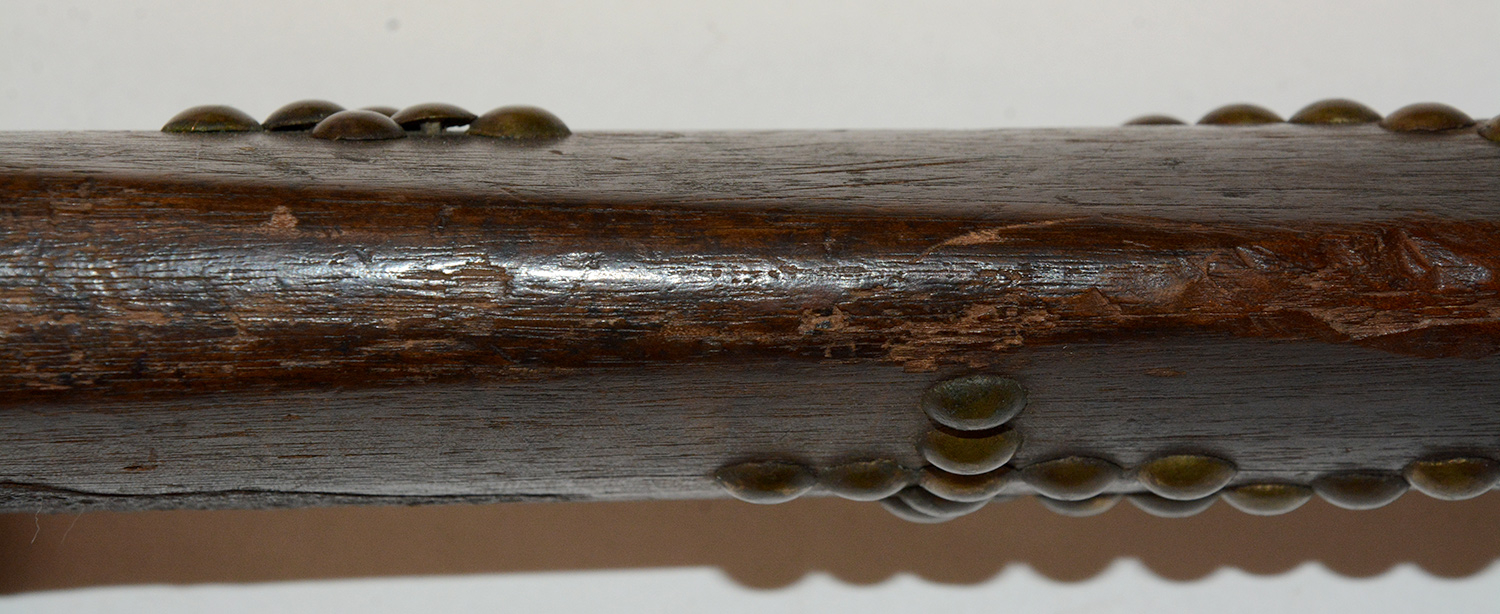
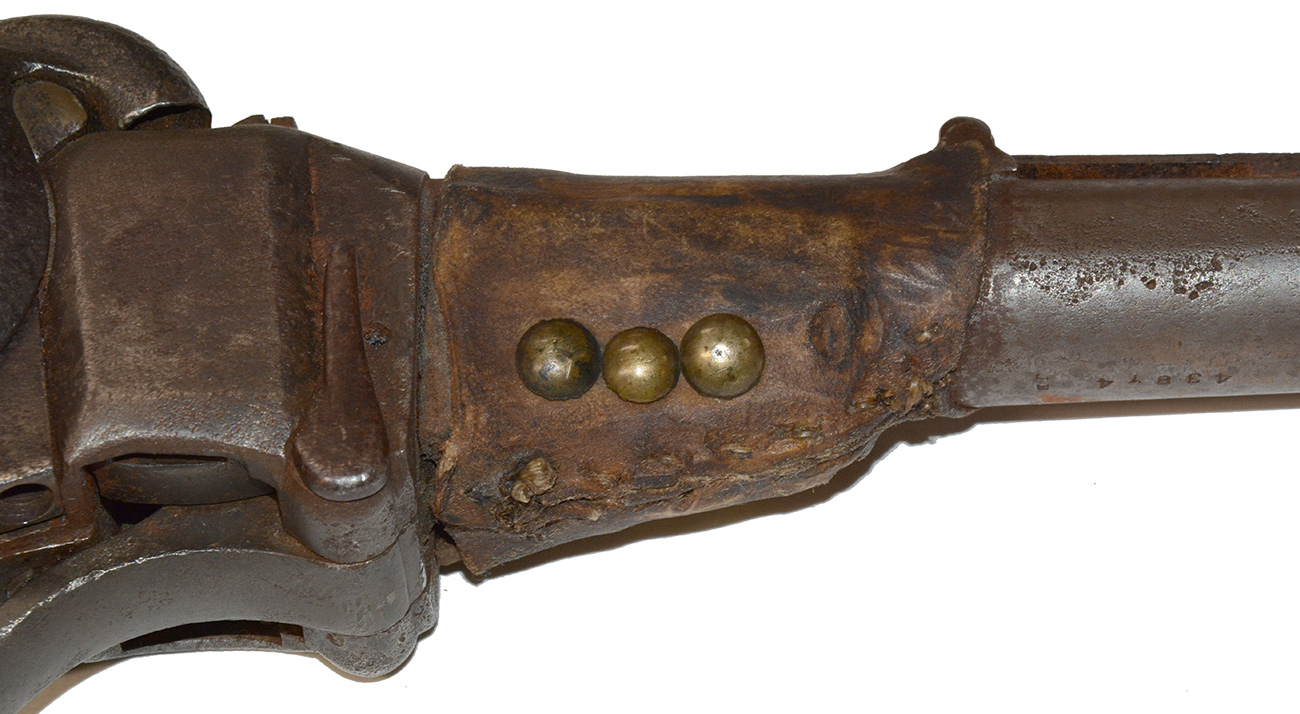

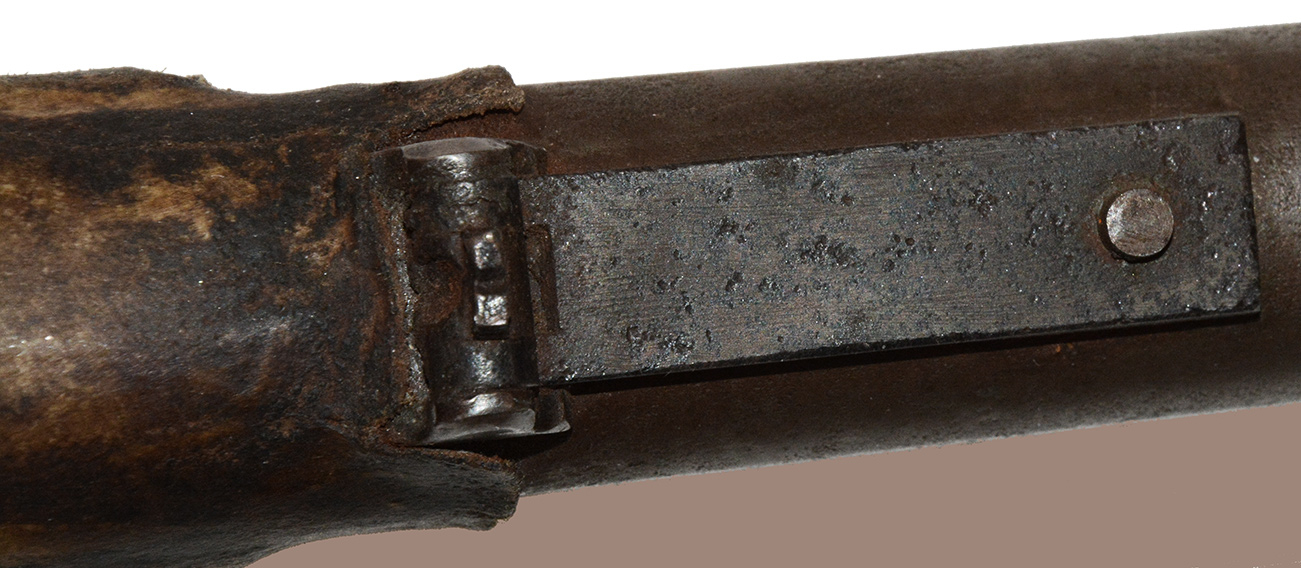
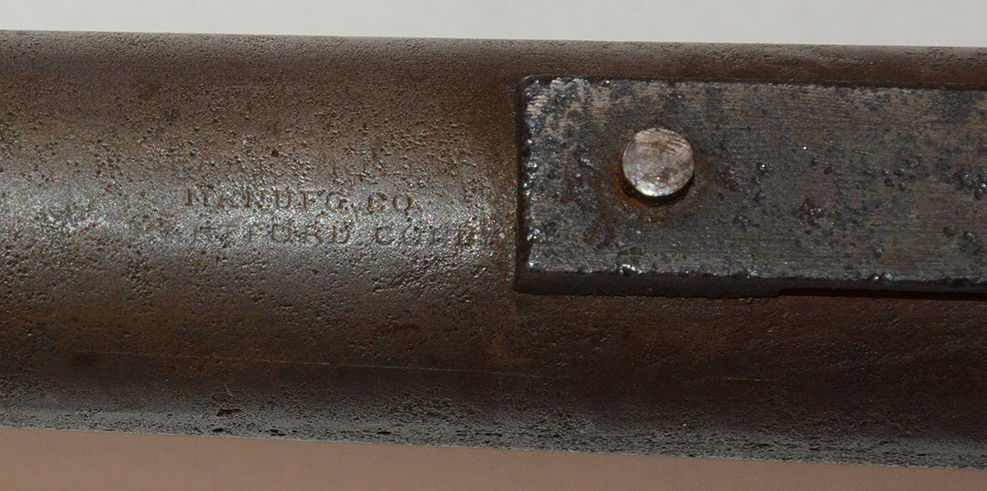
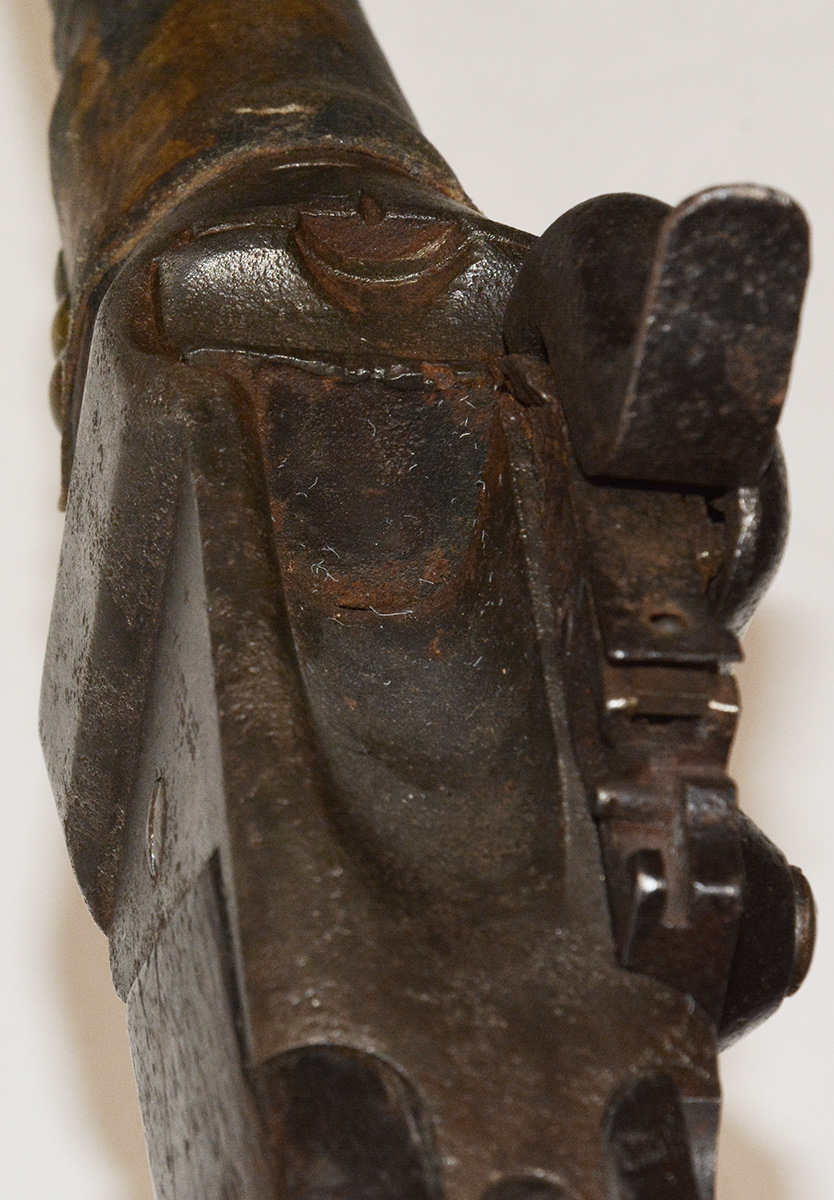
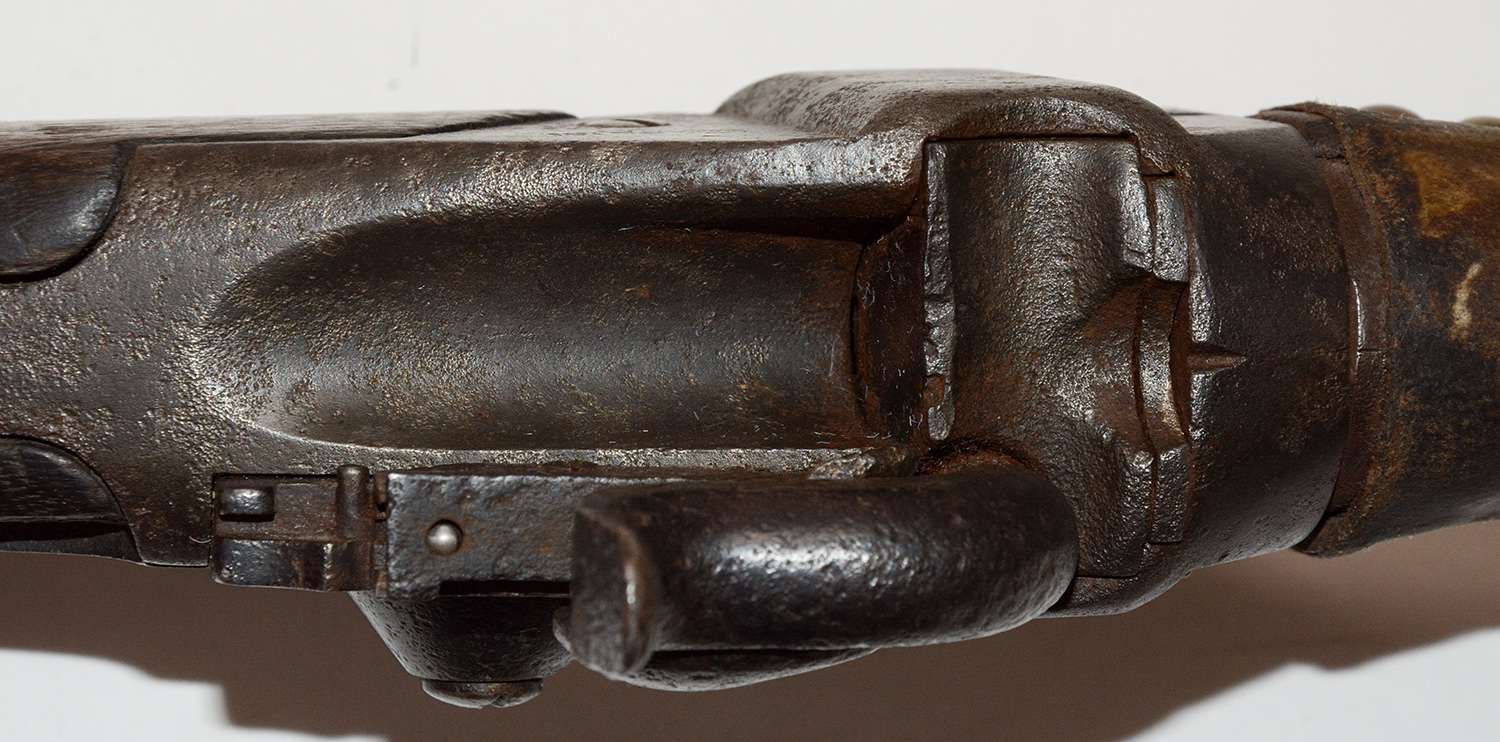
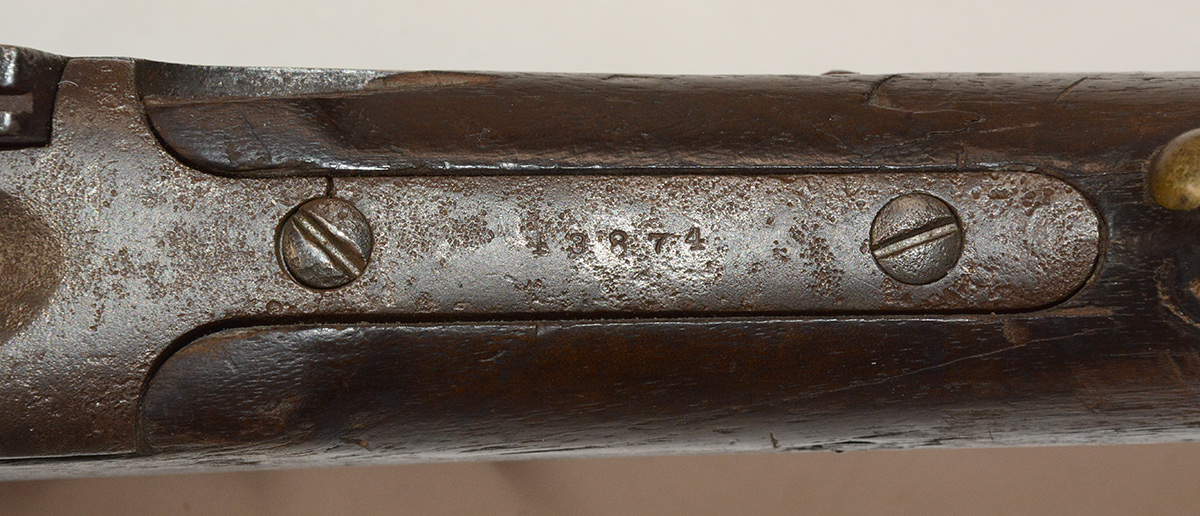
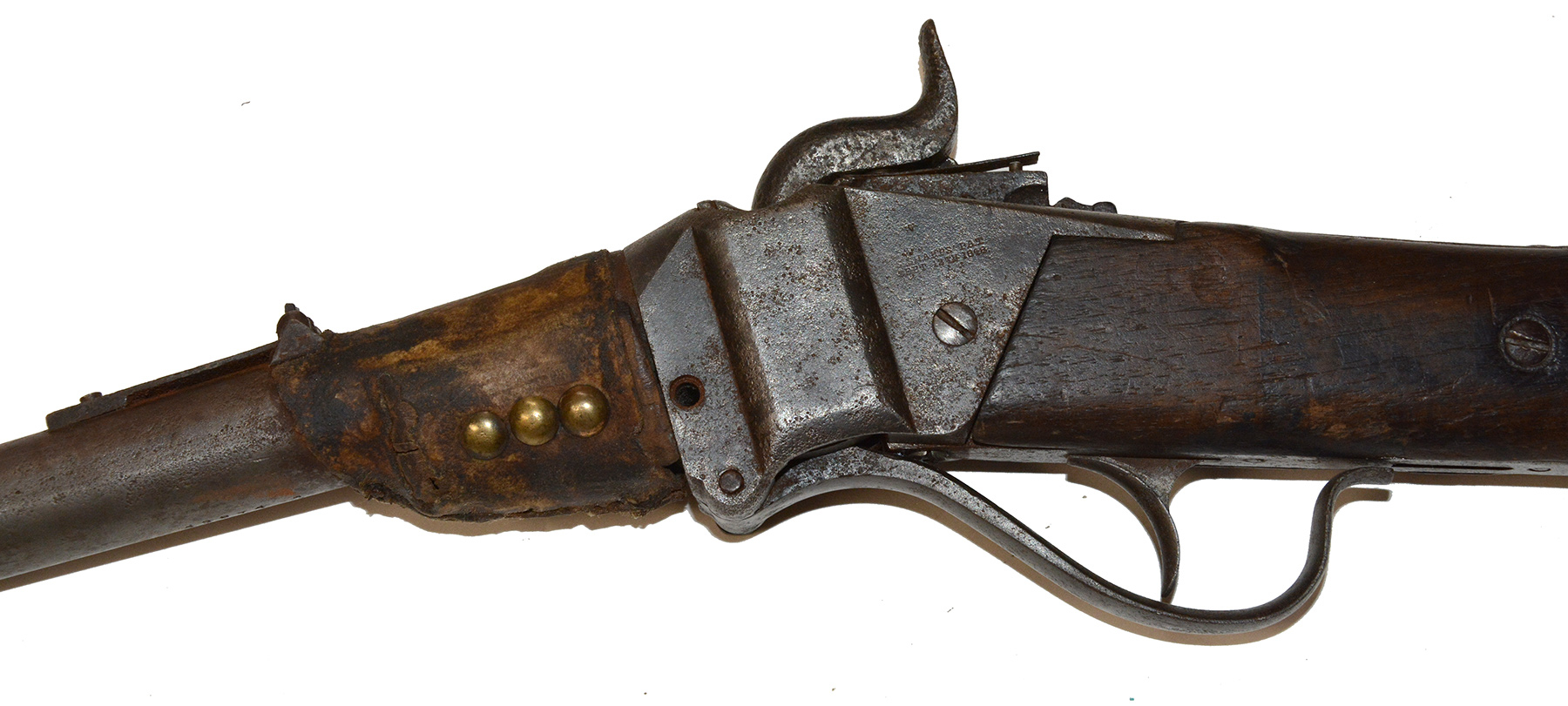

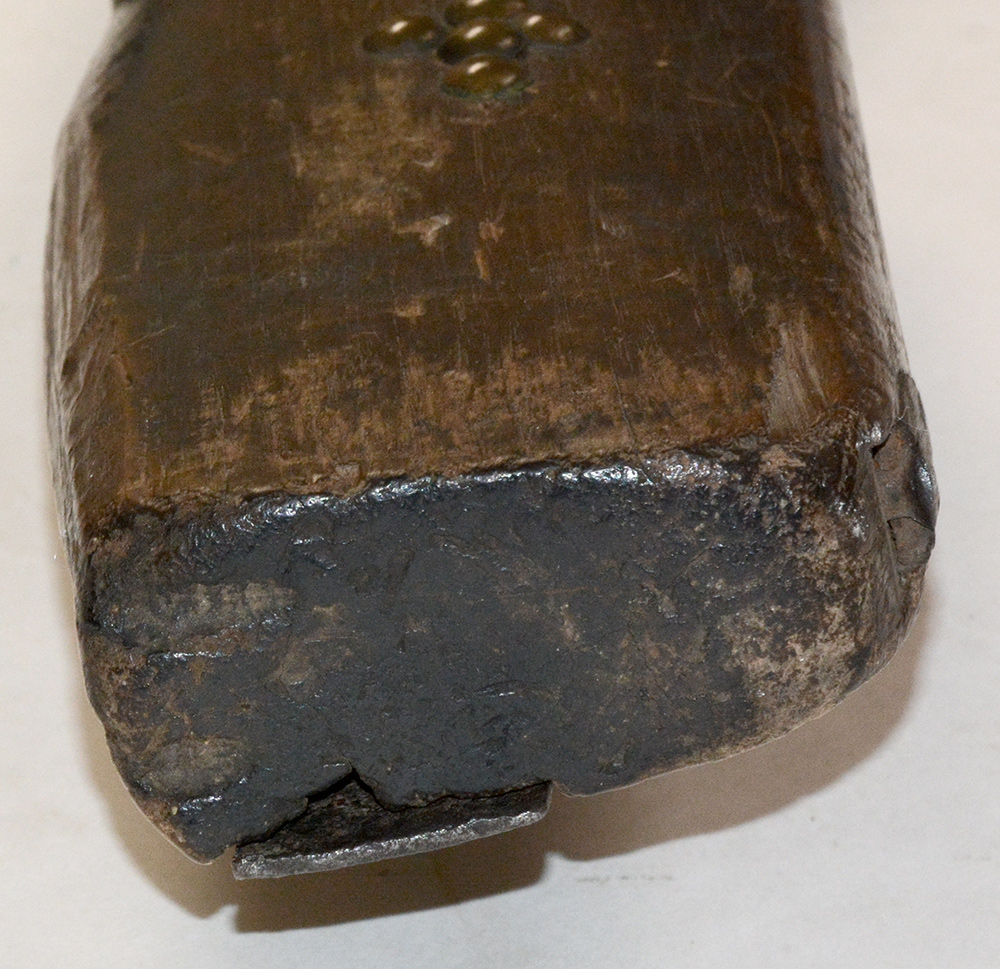
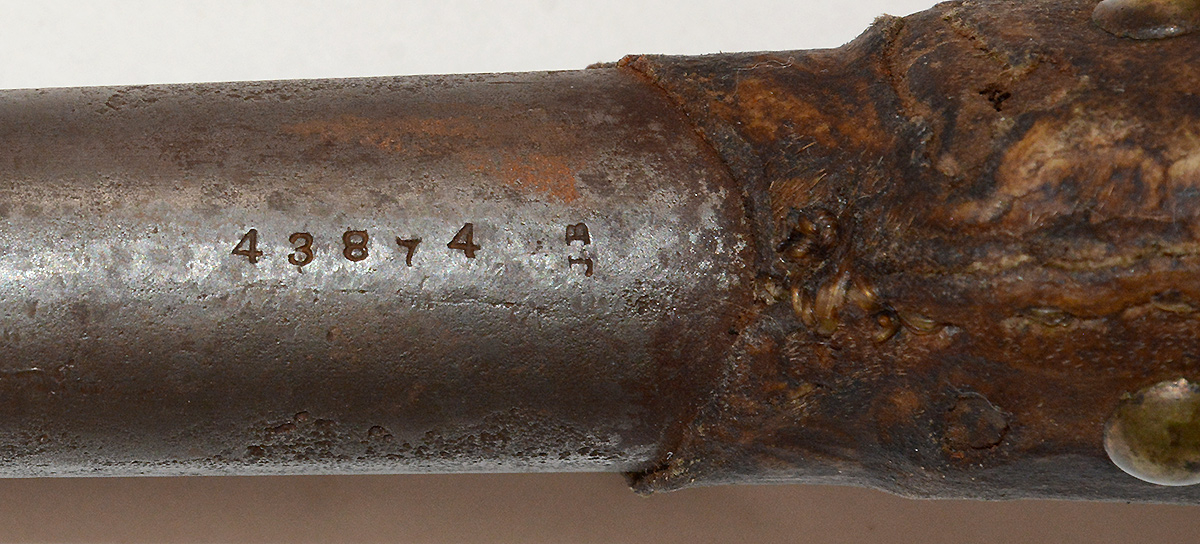

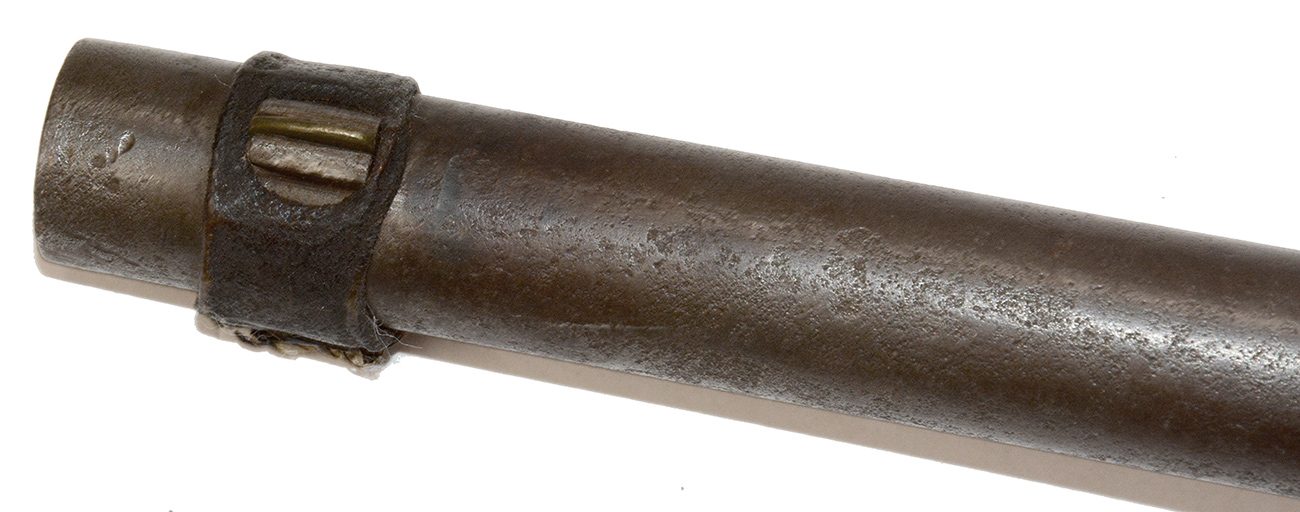
$2,250.00 SOLD
Quantity Available: None
Item Code: 302-94
This serial number 43874 Sharps is a no-doubt-about-it Native American used carbine. (We have seen more than a few poor condition rifles and carbines that were never west of Cleveland that have had some rawhide and brass tacks added in hopes of a sale.) The overall configuration matches that of 300 Sharps carbines falling in the 43000 serial number range ordered by the Navy for the Mississippi Squadron, but never issued. They utilize a rifle receiver and buttstock, but use a standard carbine barrel. Since the Navy did not use carbine slings, they had no use for the side bar and those carbines, like this one, have no provision for a sling bar or ring, otherwise it follows the general lines of a .52 caliber Sharps carbine. The 1866 Navy inventory lists none, so they may have been disposed of by that time. Marcot et al. feel they would not have been issued to federal cavalry because they lacked the sling ring.
This shows rough handling and outdoor use. Various parts are missing, either lost, discarded as useless, or recycled into something else. The front sight is present and banded with a strip of leather, but the rear sight leaves are gone, leaving the sight base and rear notch as sufficient. The forestock was almost entirely removed and the remainder, behind the rear sight, shaved down and wrapped in leather that is secure by three brass tacks on each side, given the user just enough to hold a hot barrel. (This discloses the serial number on the barrel, which matches the tang.) The barrel itself is not bad, with an even brown color and lightly pitted uniform surface, with more serious pitting toward the receiver, which itself is gray with some deep pitting, as is the hammer, top of the breechblock, etc. The receiver and lock plate markings are visible, though the patent marking behind the hammer is mostly gone. The lock plate shows a mix of bluish gray and lighter gray. The loading channel and tang are pitted. The tang has a partial crack at the screw. The serial number is legible. The lever catch was removed and the clean out screw is missing.
There are a couple of short cracks to the buttstock. The right side has a line of tacks angling back from the wrist with a cross above. The iron patch box is in place, but heavily pitted. The belly of the stock has been shaved off, the sling swivel and its base removed, and the buttplate found better purposes, although the end of the buttplate tang and its screw remain. The left side has a similar slanted line of tacks, with one missing, and shorter cross of four tacks in a horizontal line with two missing, and one at top and bottom at center.
This is a good, real example of a western American Indian used carbine that would fit really well in a western display. [sr] [ph:L]
DISCLAIMER: All firearms are sold as collector's items only - we do not accept responsibility as to the shooting safety or reliability of any antique firearm. All firearms are described as accurately as possible, given the restraints of a catalog listing length. We want satisfied customers & often "under" describe the weapons. Any city or state regulations regarding owning antique firearms are the responsibility of the purchaser. All firearms are "mechanically perfect" unless noted, but again, are NOT warranted as safe to fire!
~~~~~~~~~~~~~~~~~~~~~~~~~~~~~~~~~~~
THIS ITEM, AS WITH ALL OTHER ITEMS AVAILABLE ON OUR WEB SITE,
MAY BE PURCHASED THROUGH OUR LAYAWAY PROGRAM.
FOR OUR POLICIES AND TERMS,
CLICK ON ‘CONTACT US’ AT THE TOP OF ANY PAGE ON THE SITE,
THEN ON ‘LAYAWAY POLICY’.
THANK YOU!
Inquire About INDIAN USED AND TACK DECORATED SHARPS NEW MODEL 1859 NAVY CARBINE
Most Popular
Historical Firearms Stolen From The National Civil War Museum In Harrisburg, Pa »
Theft From Gravesite Of Gen. John Reynolds »
Selection Of Unframed Prints By Don Troiani »
Fine Condition Brass Infantry Bugle Insignia »
British Imported, Confederate Used Bayonet »
Scarce New Model 1865 Sharps Still In Percussion Near Factory New »
featured item
FIRST NATIONAL CONFEDERATE FLAG OF THE RED RIVER VOLUNTEERS, CO. E 11th TEXAS CAVALRY
This eleven-star First National Confederate Flag was sewn by Mrs. Isabella (“Ibbie”) Haddon Hopkins Gordon of Clarksville, Texas, and presented to the “Red River Volunteers,” later Company E 11th Texas Cavalry, a company commanded by Capt.… (1179-1396). Learn More »


